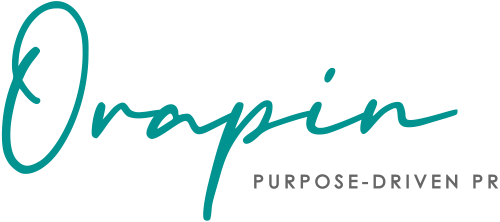
Want media coverage? First, you need a story or the ability to contribute valuable information, then you need a solid pitch. For purpose-driven organizations, nonprofits, and thought leaders, it usually isn’t the content of the pitch, but more so the quality of the pitch that determines whether or not you earn a media hit. Your organization may be orchestrating an amazing campaign to support your local community, but if you fail to share the news in a timely manner, don’t provide an explanation of why the event is newsworthy, how it impacts the community, or an expert voice to speak on the topic, the pitch may fall flat.
To avoid this failure to launch scenario, we’ve put together a list of some of the most common pitch types and the key components you’ll want to include to ensure pitching success and earning consistent coverage for your good work and expertise.
For purpose-driven organizations and thought leaders, pitches will typically fall into two main categories: news and expert positioning. These examples are certainly not an exhaustive list, but rather provide a deep dive into a few of the most common pitches.
News Pitches
Some of the most successful pitches out there are able to tie into what we consider “news.” News is new, noteworthy, timely, and relevant. Always ask yourself, is the “news” that you are trying to pitch news to you, or is it news to the audience of the publication? The fact that you held a stakeholder meeting or a charity golf tournament might be newsworthy to your key stakeholders, but it is not newsworthy to the audience of the New York Times.
Each pitch should contain specific key elements, which we’ve included in the “Anatomy of the pitch” section below each type of pitch.
1. The “Breaking News Tie-In” pitch: If all the headlines are about new research that shows children have been struggling with heightened anxiety due to the pandemic and your behavioral health clinic is providing a new set of services to address exactly this problem within your community, then you have a tie-in to breaking news
Anatomy of the pitch:
- Briefly reference the news story or provide a link to a recent article that the publication or journalist has published
- Share the “how” or “why” of your news. Indicate why it is important for that publication’s audience to know your information as it relates to previous headlines. Make sure your pitch shares a new angle, a new solution, or an expert resource to provide a different perspective. If you are reiterating the same information, your pitch will fail. If you can show the reporter that they are only covering half of the bigger picture, then you will have their attention!
- Offer up resources or interviews with your expert and be ready to help the reporter learn more about your unique angle
2. The “Story Idea” Pitch: Content pitches are a way to let a reporter know about an important piece of news, a trend, or a story that (you think) they should be covering. Content pitching is all about relevancy. A pitch on your nonprofit’s success in improving graduation rates for underprivileged youth will receive a lot more interest in May than it will in July.
Anatomy of the pitch:
- Explain how this idea is appropriate for the audience, why do they need to know your story? Why is it relevant to their interests?
- Explain timeliness – is your story related to an upcoming holiday/season/event or recent happening?
- Briefly list key takeaways and the crux of the story
- Because your pitch is unsolicited, you must sell the reporter. Make sure they read your pitch and understand why your story is important to share with their audience today.
Note: Pitching TV broadcast outlets require specific additional components such as a shot list and b-roll availability. Check out our broadcast TV pitching guide for specifics on this medium.
3. The “Research Results” Pitch: Publishing original research is an excellent reason to pitch the press. As the name inherently suggests, you posed a question, formed a study, and tabulated the results. Original research is a great opportunity to share your findings and build clout for your organization.
Anatomy of the pitch:
- Start by presenting the conclusions of your research – what did you learn?
- Provide the reporter with a brief summary of the overall project. Why did you conduct the study, how/where was it conducted, were the results on par with what you expected?
- Offer up the opportunity for the reporter to connect with the expert who conducted the study in order to gain greater insight into the findings and why they should share your findings with their audience.
Expert Positioning Pitches
Expert positioning is one of the best ways to expand the reach of your message, share your expertise and point of view, build trust, and establish your authority as a go-to subject matter expert and influencer in your community and industry. In short, expert positioning – also known as “thought leadership” – will build clout and amplify your voice. Expert positioning can come in many forms – speaking engagements, podcast interviews, bylined articles, guest blogs, and being quoted as an expert source. If you have something to say, are the foremost expert in your field, or look at the world through a different lens than most, then expert positioning pitches should be included in your media outreach.
1. The “Expert Source” pitch: If you are an expert in your field or in your community, then you want reporters to ask you to share your voice, opinions, and knowledge for their stories. In order for reporters to call on you, they have to know you exist! Make sure you are consistently offering up your thoughts to relevant reporters on stories related to your area of expertise.
Anatomy of the pitch:
- Briefly reference either a story that they’ve published, a relevant news headline, or developing story angle
- Share your credentials – why are you uniquely qualified to have an opinion and a voice in the story? Just because your uncle struggled with a substance abuse disorder does not mean you are qualified to speak on addiction and recovery. If you have a Ph.D. in the subject, then you are a qualified expert
- Briefly outline your point of view and what expertise you can lend to help expand the story
- Share your availability and how to get in touch. If a reporter is on deadline, she’s going to need to interview you right away. Make sure you are available and she knows where to find you
2. The “Podcast Guest pitch: We’ve said it before and we’ll say it again, we LOVE podcasts and if they aren’t on your radar, they should be. Podcasts provide an excellent platform to share your voice and expertise with a very targeted and rapt audience. Because of their long-form format, you have the opportunity to do a deep dive into your subject and share your passion for your area of expertise.
Anatomy of the pitch:
- Become familiar with the host and the audience by listening to several past episodes. Your pitch should explain why an interview with you would make excellent content for the host and their audience
- Let them know your unique points of view – what are a few topics you can discuss that would be new and interesting to the audience?
- Share any links to past podcast appearances so that the host can get a sense of your interview style
3. The “Contributed Content” pitch: Contributed content can come in the form of a long-form article or guest blog post which is then published by the outlet with your name in the byline/as the author. Contributed content provides the opportunity for you to share your thought leadership and expertise to educate, inform, and inspire. Not all publications accept contributed content, so make sure to research your target publication prior to pitching a contributed article.
Anatomy of the pitch:
- Provide a brief summary of your credentials and area of expertise. Let them know why you are an expert in your field and why your voice deserves to be amplified through their publication
- Provide an overview of your proposed article. Keep it brief – include a title and 2-3 sentence synopsis of your article. Editors may request you tweak your topic a bit to fit the needs of the publication and may reject your proposed article if you present them with a fully drafted article that isn’t a fit
- Indicate why the article is relevant and timely
- Share your flexibility and willingness to work with them in adjusting your article topic and content as needed
Looking beyond the pitching examples above, there are certainly many additional opportunities to pitch the press such as e-book releases, new programs, products, or services, seasonal campaigns, program success stats, changes in leadership, new locations, etc. Remember, regardless of the type of pitch, you want to support the reporter and make their job easier by providing useful information, resources, and your expertise. It is not the reporter’s job to cover each and every one of your achievements or ideas, they do not owe you anything. It is the reporter’s job to share relevant information with their audiences. If you can support their work and make them look good, then your pitches will yield great results.

Diana Crawford is a seasoned public relations consultant with more than 15 years of agency, consulting, and in-house experience. She joined Orapin in 2013 and manages account services and client communications strategy development. She has worked across a variety of industries and has expertise with professional services, food/alcohol, health and wellness, lifestyle, sports, education, tech, and non-profit organizations.
